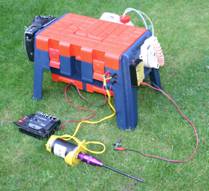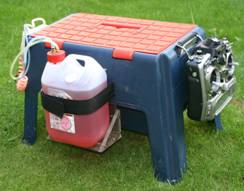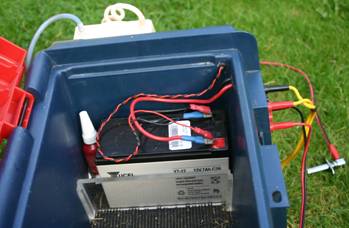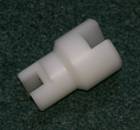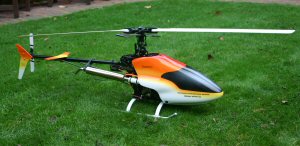Basically the choice comes down to two categories; will your first purchase be a new helicopter or a second hand one? The second choice will be the size and type of helicopter?
New or second hand?
Lets look at the first part, new or second hand. Second hand helicopters can offer very good value for money but there are many pitfalls along this route which can crop up.
- Firstly, how old is the helicopter and are spares still easily available?
- If the helicopter is a current model, always ask why is it up for sale?
- Is it because it is looking tired and well used or are they moving up to a larger helicopter?
- Even if the helicopter is a current model and airworthy, are the electrics supplied with the model ok?
- Are the servo's new or have old ones been put in to sell the model?
- How old is the receiver battery, will it require replacing?
- Is the gyro in the helicopter solid state (as the majority are these days) or is it an old mechanical gyro?
Unfortunately the list of questions goes on. Now I am not saying all second hand models are bad value for money, but for a beginner that is new to this hobby, it can be hard to see the wood for the trees. My advice on buying second hand is to ask to see it fly and/or take someone along with you who knows about helicopters.
To give you an idea of the problems, a guy turned up to my local field with an old Kalt Cyclone which had an old 60 size engine that required a belt to start it, an old method which is not favoured these days. The Helicopter must have been 10 to 15 years old and the chap wanted to learn on it. No one down the field wanted to test fly the helicopter let alone teach someone on it. The chap was adamant that he was going to learn on it and he seemed keen enough and listened to all the advice he was given. It took several visits to the club before it was in a good enough state to fly, this in itself would have put most people off.
The helicopter finally rose into the air requiring a lot of adjustments to both the helicopter and the transmitter. Although the helicopter was finally flying, it was not as stable in the air compared to the more modern helicopters, but the owner was happy. The mechanical gyro kept the tail lively as the flywheel in the gyro would slow down and then speed up. At this point I re-stated the fact that I was not happy using old receiver batteries and just as I mentioned this, the helicopter tilted to the side and hit the ground and beat itself to death.
A post mortem did indeed highlight that the battery was old and therefore did not hold a charge despite it being checked with a battery tester before the flight. The helicopter could not be rebuilt as spares are very hard to come by.
In this day and age of the internet, EBay is another source for that second hand purchase, but it is very much buyer be aware! Remember you will not be able to see it fly or poke around it.
Buying a new helicopter overcomes many of these disadvantages, and you can tailor it to fit your pocket. Most of the modern helicopters, especially the 30 size, are designed for the beginner and they are more than capable of taking the learner from the first hops into that elusive 3D flying (what can be flown normally, can be flown inverted). As long as it is well constructed, and tips on this will be covered in a later issue, then you should have less of a worry the first time you go down the field for that first flight.
With a new model, people down your local flying club will be more familiar with it and will be more willing to help you set it up which will save you time and get you airborne earlier. Many magazines I have read are very reluctant to say that brand 'X' is the better helicopter to purchase, but in truth, it is best to buy the brand that is used at your local field. In my opinion, the two which are seen more commonly down local clubs are the Hirobo Sceadu 30 and the Thunder Tiger Raptor 30, both can be upgraded to a 50 size at a later date by purchasing an upgrade kit. The Raptor 30 does have cheaper spares and since I have owned both, I continue to fly my Raptor 30, now in a 50 form, and learn all my new 3D manoeuvres on it before trying them on my larger model.
It really does come down to local club knowledge and ease of purchasing those spares and upgrades. All 30 size helicopters have an Achilles heel, the 30 size market is very fierce and very price sensitive, so manufacturers make certain non-critical parts to a cheaper design, but offer an upgrade part that will correct this issue which can be purchased at a later date.
There are many smaller companies that manufacture 3 rd party upgrades, and in a future article, I will cover these upgrades, both those that are essential and those that just look good! This is where the larger models score as very few upgrades are required, but it is reflected in the price for the kit initially.
Which type and size of helicopter should you consider?
Well, this area is expanding all the time, gone are the days when the choice was a 30 or a 60, now there are 30's, 50's, 60's, 80's and 90's! So what do these numbers mean? They actually refer to the engine size where a 30 is a 030 in 3 or 5cc engine with a rotor diameter of around 1.2 meters, a 60 is a 0.60 in 3 or 10cc engine with a rotor diameter of around 1.3 meters and a 90 is a 0.90 in 3 or 15cc engine with a rotor diameter of around 1.5 Meters.
Now, there are two main areas that just might help you in your choice and they are price of spares and fuel consumption.
First, the 30 size market is, as mentioned before, very competitively priced in terms of both model and spares, whereas the 60 and above are often more expensive to purchase the kit initially, as well as paying a higher price for the spares which can get bent or broken in the early stages of learning. This is due in part to the physical size of the 60. Larger helicopters impose greater forces therefore the frame and the control system must be capable of withstanding these forces, so a higher specification model is required, even the servo’s that control the helicopter will cost more as a higher pull rate (measured in Kilograms) is required to move the rotor head.
The other area is the fuel consumption: a 30 size helicopter is very good and lasts between 15 to 20 minutes on a well setup and run in engine as opposed to 10 minutes on a 90 size, now consider the size of the fuel tank, the 30 is about 300cc where the 90 is about 500cc, and at about £17 a gallon of fuel, I will let you do the maths.
Now, when learning, a 30 size is cheaper to purchase, is cheaper on spares and more economical, so why do people start with 60 size helicopters? Well to tell you from my experience they are few and far between as most people do start on modern 30 size helicopters and then convert them to a 50 size for more power later on when the basics of flying is under their belts. However, the 60 size is more stable to fly and is less susceptible to the wind than a 30 but its larger appearance in close proximity to you when you first start your hovering skills can be a little daunting.
Anything above a 60 is aimed at the advanced pilot craving that faster response and requiring more power for that new 3D manoeuvre.
Finally, as for type of helicopter, I am referring to a scale helicopter or a pod and boom type. The pod and boom type is more suited, and cheaper, for learning on as you don’t have to keep remaking those lovely scale parts that personalise your scale model if you have an accident. Once you have mastered the basics, and you want to try your building skills at scale helicopters, then this avenue can be explored.
In the next article, we will look into what is required to build and run a helicopter, until then, visit your local flying site and find out what helicopters they fly, most pilots are proud of their machines and are willing to talk about their model and the upgrades they have used, so take advice from the people you will be flying with in the future. Till next time...

